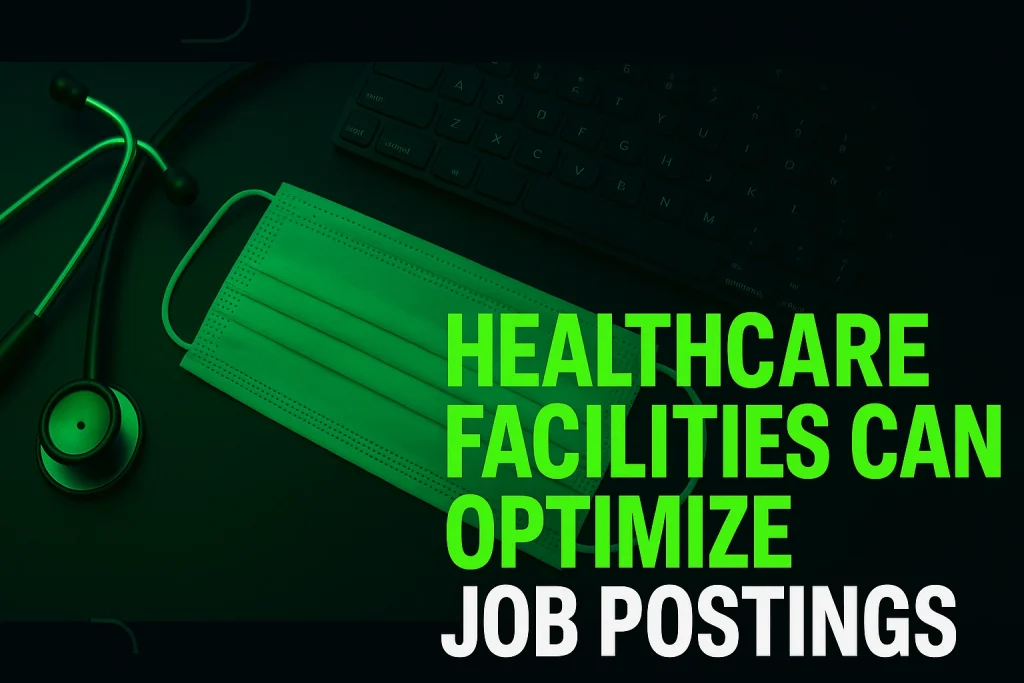The Association of American Medical Colleges warns that the United States could be short as many as 86,000 physicians by 2036. In a tight market, hospitals won’t win talent with bland, copy-and-paste listings.
Every detail of a posting, the headline, first sentence, layout, and where it appears, now works like a silent recruiter, either pulling doctors in or pushing them away.
This guide walks you through quick, low-tech tweaks that boost visibility and response rates. It then follows with a plain-English list of the most hated buzzwords to delete.
Implement these small fixes today and give your next opening a real shot at standing out in a crowd of offers.

Contents
- 1 How to Optimize Medical Job Postings
- 1.0.1 Lead with a Search-Friendly Title
- 1.0.2 Hook Readers in the First 40 Words
- 1.0.3 Show Transparent Pay and Perks
- 1.0.4 Plant the Ad Where Doctors Already Look
- 1.0.5 Design for One-Handed Mobile Browsing
- 1.0.6 Post at Peak Discovery Times
- 1.0.7 Reply Within 48 Hours and Track Sources
- 1.0.8 Words to Avoid: Stop Repelling Candidates Before They Click
- 1.1 Wrap-Up
How to Optimize Medical Job Postings
Below is a step-by-step playbook medical facilities can run through in an afternoon to pull ahead of competitors and turn scarce attention into signed contracts.
-
Lead with a Search-Friendly Title
Doctors search the same way patients do: they type a specialty plus a city or perk and skim the first few results. Replace clever-wannabe labels (“Primary-Care Superstar”) with straightforward phrases such as “Family Medicine Physician – Springfield Outpatient Clinic.”
A clear, keyword-rich title wins impressions before applicants ever read the body.
-
Hook Readers in the First 40 Words
Busy clinicians scan. Open with the practice setting, call schedule, and headline benefit (“four-day week,” for instance). If you bury the good news, another employer will showcase it first. A punchy opener also improves click-through rates from email digests and social feeds.
-
Show Transparent Pay and Perks
According to internal polling by several recruiting firms, ads that reveal salary bands attract up to 30 % more applicants than those that hide numbers. Post a realistic range, sign-on bonus, CME allowance, and relocation stipend. Transparency signals trust and weeds out mismatched expectations early.
-
Plant the Ad Where Doctors Already Look
Most physicians still begin their hunt on specialty sites before branching out. They start their search on dedicated family medicine job boards to benchmark pay and location options, so mirroring the keywords used helps your ads or careers page rank beside the listings they already trust.
Publishing simultaneously on a company website, LinkedIn, and respected boards multiplies reach without extra writing: a cut-and-paste of the core details usually suffices.
-
Design for One-Handed Mobile Browsing
Indeed’s research shows that more than seven in ten job seekers now browse openings on a phone, and healthcare workers follow the same habit trail. Use a single-column layout, 16-pixel base font, and white space around tap targets. Add a tap-to-call button for instant contact with your recruiter.
-
Post at Peak Discovery Times
Indeed’s data shows people hunt for jobs most around midday, with traffic strongest from Monday to Wednesday. The single busiest slot is Tuesday at 11 a.m., followed closely by Wednesday at 10 a.m. Schedule your listing or paid boost to catch that wave. Refresh the post every 14 days; many boards bump recently updated ads back to the top.
-
Reply Within 48 Hours and Track Sources
Surveys of residents and early-career doctors reveal that interest drops sharply when a recruiter takes longer than two days to respond. Set an auto-reply confirming receipt, then aim for a live follow-up call or email within 24–48 hours. Add UTM parameters to every external link so your applicant-tracking system shows which channels convert best.
-
Words to Avoid: Stop Repelling Candidates Before They Click
Recruiters not experienced in content creation often paste in familiar but fuzzy phrases that read fine to HR yet set off alarm bells for candidates.
“Dynamic environment.” That’s recruiter-speak for long hours and constant change. Instead, spell out the actual setup: “Team of six physicians with a shared call schedule.”
“Competitive package.” Everyone says this, so it carries zero weight. Offer the numbers: “$250 K–$285 K base plus a $30 K sign-on bonus.”
“Must be flexible.” Doctors hear “unpredictable shifts.” Clarify instead: “Four-day workweek, rotating Fridays off.”
“Work hard, play hard.” Sounds like a burnout recipe. Reframe with specifics: “Average 16 patients per day, 1-in-6 weekend call.”
“Fast-paced.” Suggests understaffing and burying in the clinic management system instead of working with patients.. Say what you mean: “Thirty-minute new-patient slots to preserve quality of care.”. If your clinic utilizes modern tools, mention systems such as e-charting and online prescription platforms that reduce administrative burdens and support efficient patient care.
“Like a family.” It can hint at blurred boundaries or unpaid overtime. A clearer alternative: “Monthly cross-department town halls to keep everyone in the loop.”
Replacing vague buzzwords with measurable facts boosts trust and makes your ad stand out in a sea of copy-paste listings.
Wrap-Up
Physician shortages may dominate headlines, but many hospitals still lose candidates to basic oversights like slow pages, vague titles, and buried benefits.
Apply this quick checklist, and your next ad will speak the language doctors use, surface where they search, and convert at a pace that eases staffing headaches before they spiral.
Small tweaks beat big budgets when attention is scarce. Start with one posting today, track the lift, and roll the winning formula across every open role on your roster.

















